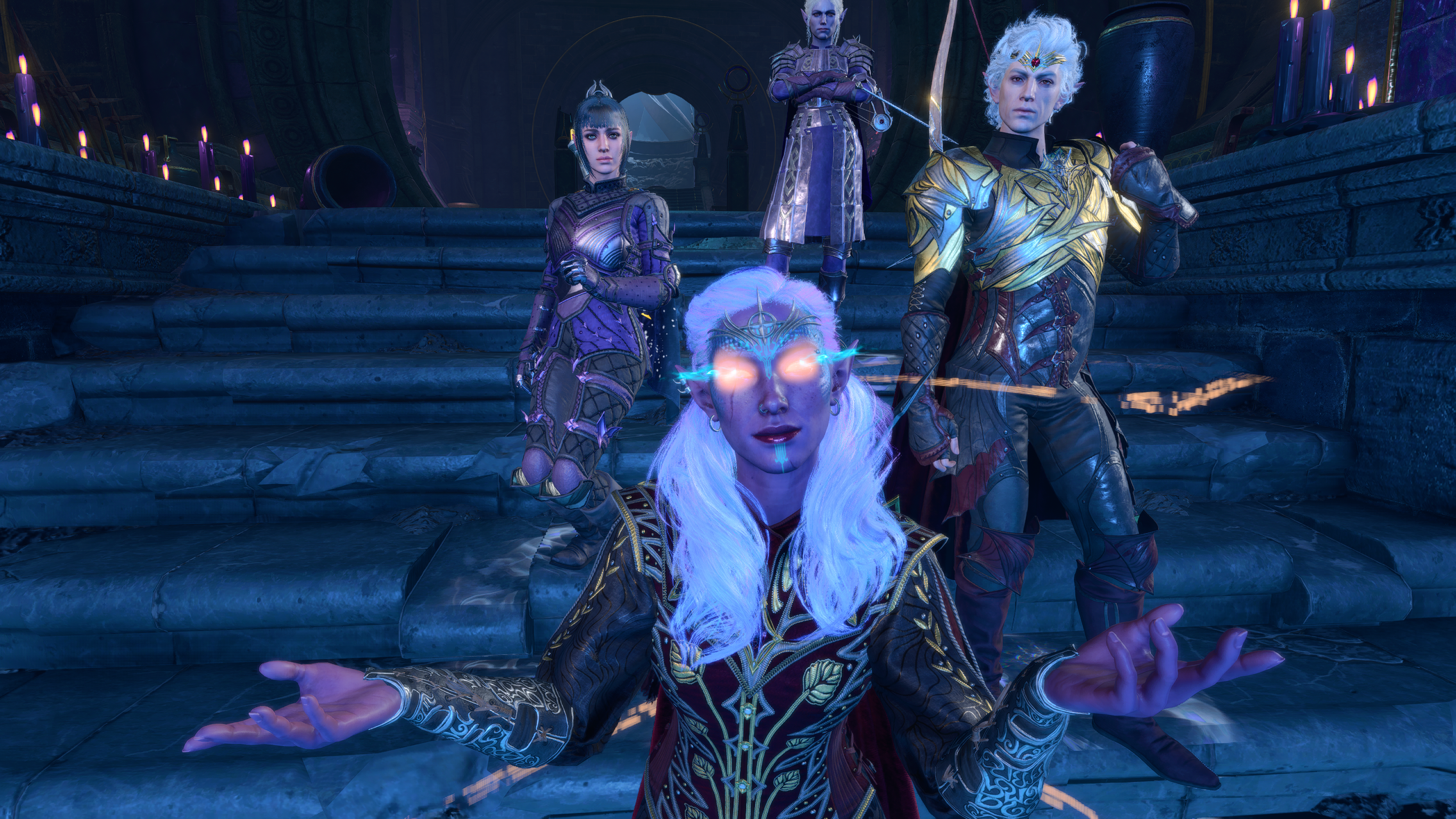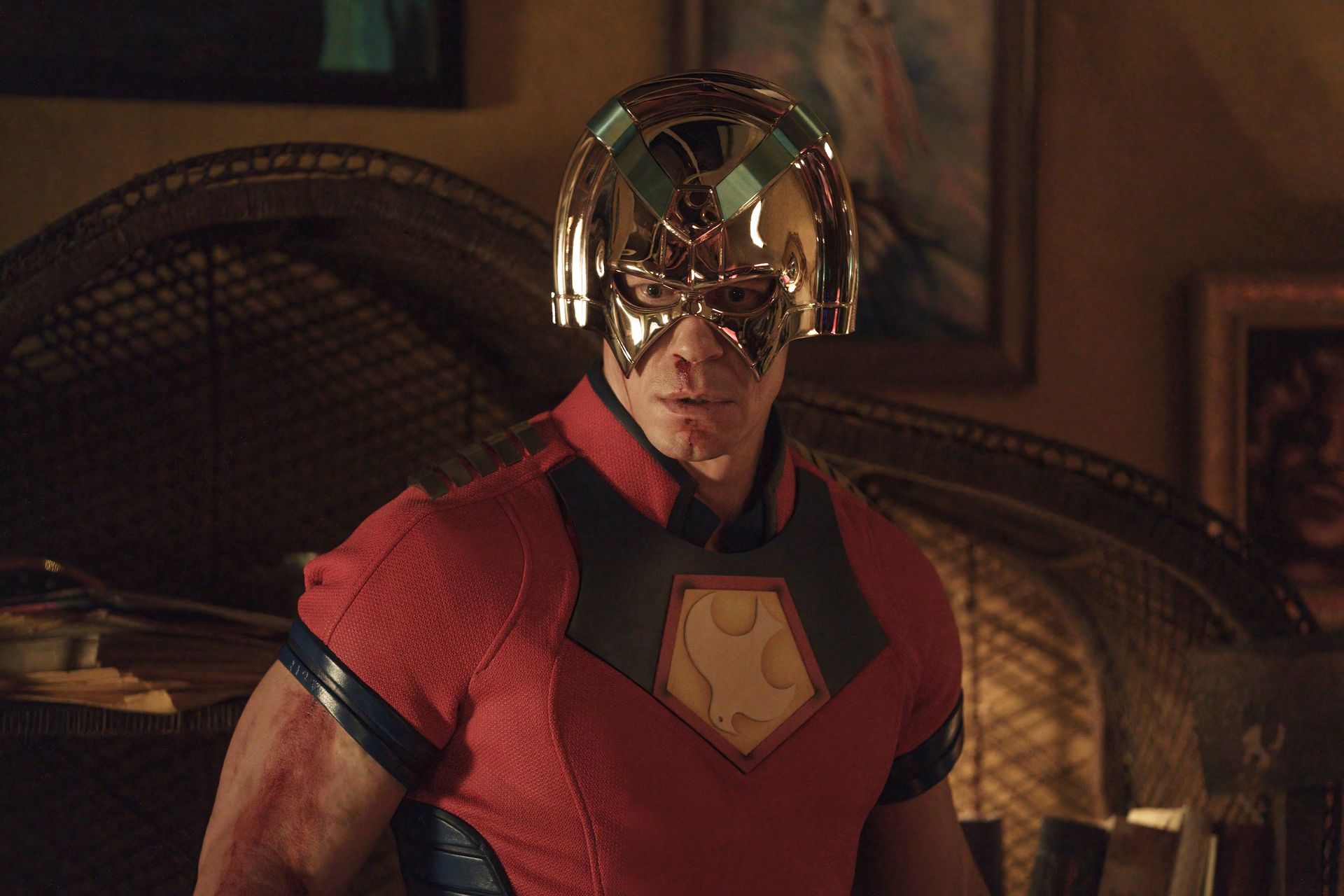There are plenty of RPGs out there that allow players to take a darker path. Mass Effect offers you the Renegade path, Fallout: New Vegas gives you the option to side with Caesar and his loony gang of goons, and Vampyr lets you nom on the necks of anyone who looks especially tasty. But nothing makes playing a bad guy feel quite as good as the Dark Urge campaign from Baldur’s Gate 3.
For years, I’ve given “evil” playthroughs a shot. But aside from achievement hunting, I’ve never really seen the point in being a bad guy. I tend to play as a good-aligned character during my initial run, and might go back for a second playthrough to see the darker side of things later on. But most RPGs don’t give me an especially good reason to do that. By the end of my first run, I know how the story ends. I’ve grown attached to various NPCs and companion characters, and don’t have an especially strong desire to replay it all just so I can use mean dialogue options the second time around.
Baldur’s Gate 3, however, is a different story. Not long after the game launched in 2023, I became hooked on it, as did my many D&D-loving friends. Our Discord server filled up with commentary about the game, requests for a multiplayer campaign, and, surprisingly, demands that I try out the game’s Dark Urge campaign, which gives Tav (BG3’s default player-character) a murderous urge and a fascinating backstory to go with it.
Most RPGs give you two options: Play as a goody two-shoes, or play as an unrepentant asshole. But Baldur’s Gate 3 takes a different approach. You can play a standard campaign in which you may behave as you see fit, be that good or bad. You can play an Origin campaign, which sees you traversing Faerûn in the shoes of one of the game’s beloved companion characters. Or you can play as The Dark Urge, a character who can’t remember their past, and only knows that their future-self has far more issues to reckon with than simple Illithid parasites.
The reason Baldur’s Gate 3 has such a good “bad” campaign is that the game’s writers realized that senseless bloodshed is boring on its own. Plenty of games offer players the choice to play an evil maniac, but they rarely offer players a good reason to play an evil maniac. Baldur’s Gate 3 avoids this issue by luring you in with a narrative mystery: “Why does The Dark Urge crave murder, and why is my character the one experiencing this urge?”
The Dark Urge is Baldur’s Gate 3‘s “evil” playthrough, but just how evil it gets is entirely up to the player. Plagued by violent dreams and blood-soaked fantasies, Dark Urge knows that something is terribly wrong with them, but they don’t know why. Trying to figure out where those wicked urges come from — and deciding whether or not to give into them — is what sets Baldur’s Gate 3 apart from the plethora of other RPGs with morality systems and difficult choices. Plenty of games will give you the ability to play as an unrepentant asshole, but Baldur’s Gate 3 gives you a reason to want to play one. The Dark Urge isn’t just evil for the sake of it, they’re evil to their core, right down to their DNA. Discovering why that is — learning where the Dark Urge got their dark urges from — is half the fun, and it’s an extremely effective way to entice players into trying out a “bad guy” run. The rest of the fun comes from deciding what kind of bad guy you’re going to be.
Players can choose to play an extremely evil Dark Urge, or lean into the character’s softer side.
No matter how you play Dark Urge, they will inevitably kill at least one person. It happens early on in the game, and there’s no getting around it. There are no saving throws, no alternatives, nothing you can do. Tav simply blacks out, and upon waking, finds themselves sitting in front of a fresh corpse, their hands covered in blood, with no memory of what just happened. The victim in question is an otherwise not-that-important NPC, but I’d grown fond of her, so when her life was ended at the hands of my Dark Urge Tav, I promptly reloaded my previous save and, in a desperate bid to avoid killing this NPC, activated non-lethal damage, hunted her down, and (gently) knocked her unconscious. I had very little faith that this would actually do anything — surely the game would simply wake her up and teleport her to her final, grim cutscene. Right?
Wrong. When I returned to camp, expecting to once again watch helplessly as this NPC died by my hands, I was met with a surprise: The kindhearted NPC I’d just knocked unconscious was nowhere to be found, and a new NPC (who never appears elsewhere in-game) had arrived in her place. This new NPC was, of course, just as doomed as the last one, but her death wasn’t nearly as traumatic, as I hadn’t already become emotionally attached to her. The message was clear: The Dark Urge demands blood, but how you go about satisfying that urge is entirely up to you. The NPC I knocked out likely woke up sore and pissed off, but hey, at least she woke up.
Tav is faced with many other situations that can end with an NPC or companion character dying by their hands, but for the most part, successful saving throws can prevent disaster. That’s arguably the best part of Dark Urge playthroughs: Even though you’ve chosen to play a “bad guy,” you still get to decide whether your Tav will give in to their evil urges, or attempt to resist them. This adds another layer of complexity to “evil” playthroughs that — combined with The Dark Urge’s unique backstory — make it feel as though you’re playing a sort of pseudo-DLC expansion rather than simply replaying a game you’ve already played once. Playing as The Dark Urge affects everything from companion romance to combat encounters to your relationship with The Dead Three and their respective chosen ones.
It can be difficult to know when The Urge will strike, or how you should respond to it. For instance, upon arriving at Moonrise Towers, my Dark Urge Tav encountered a cat who indicated it had met me previously, and was displeased to see me. Apparently I’d kicked the poor creature the last time we crossed paths. Since my Tav had no memory of anything that she’d done prior to the events of the game, I chose to have her try and remember her last encounter with the cat. She retreated into her mind, grasping at memories that remained just out of reach. When she opened her eyes, the cat lay dead at her feet, as her companions looked on in horror. As The Dark Urge, trying to remember your past comes with a price: You might end up re-enacting it.
Following the accidental cat-murder incident, my character had decided what path she’d take: She would uncover her past (carefully, and hopefully without killing any more cats or unsuspecting Bards). She would free herself from the clutches of The Urge. But until then, she’d do her best to be honest, to be gentle, to be good. But in Baldur’s Gate, even good behavior comes at a price.
To kill or not to kill?
After refusing to give in to her deadlier proclivities on several occasions, my character was awakened in the night by The Urge’s hunger. It was starving, you see, after going so long without shedding innocent blood, and now it craved the blood of one person in particular: Astarion, the sassy vampire companion with whom my character had recently struck up a romance. I won’t spoil the outcome of that little encounter — each companion character responds differently when they learn what Dark Urge Tav has been hiding (provided they live long enough to even find out). But I will say this: More RPGs should do away with binary “good guy or bad guy” choices, and craft a Dark Urge-style campaign that lets players be evil while revealing how they turned out that way.
In many games, bad behavior comes at a price — if you punch this guy now, he’ll probably be less likely to help you out later on — but bad behavior rarely comes with a reward. Sure, you can run through the entire Mass Effect trilogy playing a Renegade Shepard, but you’re never really given a good reason for why Shepard chooses to be a jerk to everyone, and your bad behavior isn’t often rewarded.
But Baldur’s Gate 3 not only explains why The Dark Urge is so evil, it also takes things a step further by making an evil playthrough rewarding both narratively and in practice. Giving in to The Urge leads to ill-gotten gains like special powers and Dark Urge-exclusive gear, while resisting The Urge keeps your friends and companions at your side (and keeps them alive). But whether you’re playing a good-bad guy or a bad-bad guy, all Dark Urge playthroughs are fun and satisfying because Dark Urge Tav comes with a unique backstory that also has ties to Gorion’s Ward, the main character of Baldur’s Gate and Baldur’s Gate 2. Uncovering that backstory is both fascinating and rewarding regardless of whether you’ve played the first two games or not.
The majority of RPGs on the market seem uncomfortable with the idea of their players taking on the role of a truly evil being, so they don’t bother creating a bespoke campaign just for evil playthroughs. You might be able to fling a few half-hearted insults in Cyberpunk 2077, or end up divorced by your in-game spouse after ceiling an innocent civilian in Starfield, but bad behavior in most RPGs is rarely as gratifying as it is in Baldur’s Gate 3.
Given Baldur’s Gate 3‘s overwhelming success, I really hope we start seeing more games take the Dark Urge route in the future, crafting “evil” campaigns with unique backstories for players who don’t necessarily want to play the hero, but are tired of playing two-dimensional villains.
After all, every bad guy needs a good origin story.














